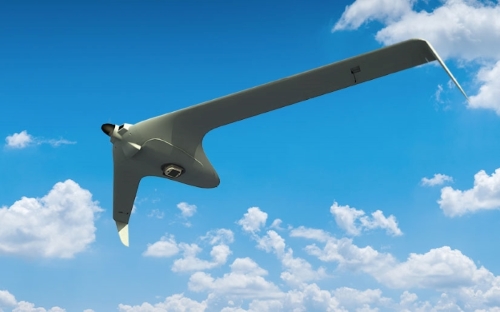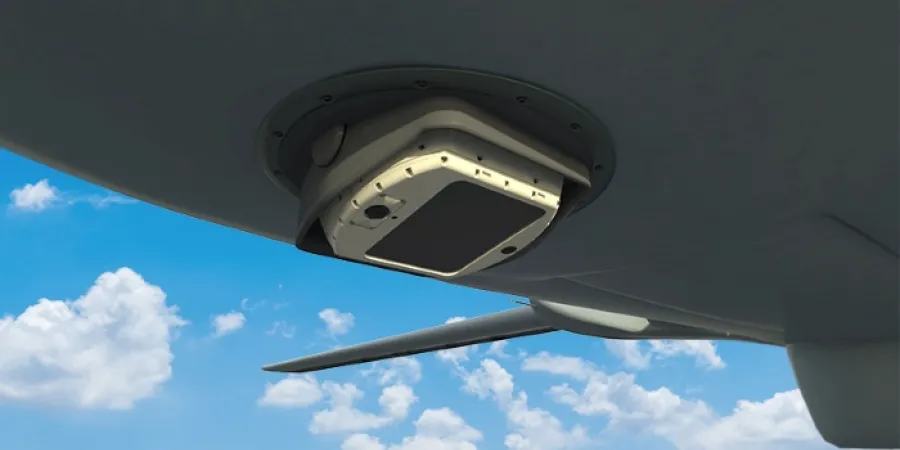IAI unveils WASP system for aerial surveillance of wide areas
Utilizing state-of-the-art technology, the system is capable of identifying and tracking moving targets while continuously monitoring areas of up to 15km wide, the company says
IsraelDefense
|
08/02/2021
Israel Aerospace Industries on Monday unveiled the WASP, a new aerial surveillance system that it said identifies and tracks moving targets in wide areas, day and night, with great precision.
Utilizing state-of-the-art electro-optical and infrared sensors, artificial intelligence algorithms and adaptive rule engines, the WASP covers large areas with a high revisit rate, tracks and identifies moving targets that correlate with mission requirements and objectives, and alerts the system's operator. Compact, lightweight and requiring low power consumption, the WASP can be used with various aerial platforms such as tactical UAVs, drones, fixed and rotary wing aircraft and tethered surveillance balloons, IAI said.
The WASP’s coverage area and resolution changes according to its platform and operating altitude. Mounted on a tactical UAV such as the BirdEye 650D, the WASP covers two square kilometers in optimal resolution to detect all types of moving targets. When mounted on a UAV such as the Heron 1, the coverage area expands over 15 square kilometers to detect mostly vehicle size objects, among others, according to the company.
Moshe Levy, IAI Executive Vice President and General Manager of the Military Aircraft Group, said, "The development of WASP exemplifies IAI’s novel strategy to ISR systems development, intelligence and information fusion capabilities. By providing a highly detailed intelligence picture in a wide area, WASP provides excellent two-layer situational awareness that comprises both visual and intelligence information. As a compact and light system, it can be mounted on a range of platforms to provide strong intelligence capabilities already on the tactical level."

Photo: IAI
Utilizing state-of-the-art technology, the system is capable of identifying and tracking moving targets while continuously monitoring areas of up to 15km wide, the company says
Israel Aerospace Industries on Monday unveiled the WASP, a new aerial surveillance system that it said identifies and tracks moving targets in wide areas, day and night, with great precision.
Utilizing state-of-the-art electro-optical and infrared sensors, artificial intelligence algorithms and adaptive rule engines, the WASP covers large areas with a high revisit rate, tracks and identifies moving targets that correlate with mission requirements and objectives, and alerts the system's operator. Compact, lightweight and requiring low power consumption, the WASP can be used with various aerial platforms such as tactical UAVs, drones, fixed and rotary wing aircraft and tethered surveillance balloons, IAI said.
The WASP’s coverage area and resolution changes according to its platform and operating altitude. Mounted on a tactical UAV such as the BirdEye 650D, the WASP covers two square kilometers in optimal resolution to detect all types of moving targets. When mounted on a UAV such as the Heron 1, the coverage area expands over 15 square kilometers to detect mostly vehicle size objects, among others, according to the company.
Moshe Levy, IAI Executive Vice President and General Manager of the Military Aircraft Group, said, "The development of WASP exemplifies IAI’s novel strategy to ISR systems development, intelligence and information fusion capabilities. By providing a highly detailed intelligence picture in a wide area, WASP provides excellent two-layer situational awareness that comprises both visual and intelligence information. As a compact and light system, it can be mounted on a range of platforms to provide strong intelligence capabilities already on the tactical level."

Photo: IAI



